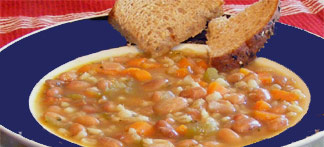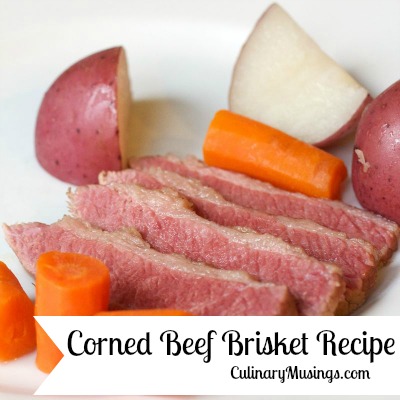What are the key relevance factors for grading honey?
 Honey is nature's perfect food: it is the only food that humans eat that harms neither plant nor animal in its production and consumption.
Honey is nature's perfect food: it is the only food that humans eat that harms neither plant nor animal in its production and consumption.
Honey is derived from plant nectar, with each individual honeybee contributing perhaps only 1/12 of a teaspoon to the hive's honey production during her entire lifetime. Because there are so many different nectar sources being visited by a single hive of bees, even a single pound of produced honey will contain nectar from thousands and thousands of different flowers. In order to standardize the sale of honey, the USDA developed a set of standards for grading honey. As of 1985, these Standards are now in their fifth issue. According to the National Honey Board, honey is graded, on a voluntary basis, using these USDA standards.
There are 6 relevant factors in evaluating the honey's grade (5 quality factors and color):
Key Relevance Factors for Grading Honey
- - Total Soluble Solids
- - Water Content
- - Flavor and Aroma
- - Clarity
- - Absence of DefectsAnd
- - Color
The Analytical Factors
These factors may be determined directly through the use of laboratory tests.
| Grade | Minimum Total Solids (%) | Maximum Water Content(%) |
| Grade A | 81.4 | 18.6 |
| Grade B | 81.4 | 18.6 |
| Grade C | 80.0 | 20.0 |
The remaining key relevance factors are assigned subjective points which contribute to the overall score:
| Factors | Points |
| Flavor and aroma | 50 |
| Absence of defects | 40 |
| Clarity | 10 |
| Total Score | 100 |
- Flavor and Aroma
- - Good Flavor and aroma for the predominant floral source
- - Reasonably good flavor and aroma for the predominant floral source
- - Fairly good flavor and aroma for the predominant floral source
- Absense of Defects
- - Practically Free
- - Reasonably Free
- - Fairly Free
- Clarity (used only for strained honey, not for filtered)
- - Clear
- - Reasonably Clear
- - Fairly Clear
Each Grade has a range of score points for each Grade. For example, for Flavor and Aroma, the following points are assigned for each grade range:
| Grade | Flavor and Aroma Description | Score Points |
| Grade A | Good - free from caramelization, smoke, fermentation, chemicals, and other causes | 46-50 |
| Grade B | Reasonably good - practically free from caramelization, free from smoke, fermentation, chemicals, and other causes | 40-44 |
| Grade C | Fairly good – reasonably free from caramelization, free from smoke, fermentation, chemicals, and other causes | 35-39 |
| Substandard | Poor – Fails Grade C | 0-34 |
Similar tests are applied to the other key relevance factors. In determining the overall score, there is another "gotcha": in order to qualify for a given overall Grade, the honey must make a qualifying score for that Grade in BOTH the Absence of Defects, and Flavor and Aroma Factors. In addition the Clarity Factor must exceed the scores needed for Grade C in order to rate a Grade B or A overall score. In other words, making a B in the Clarity Factor points can still allow the honey to be graded A overall assuming it has the points), but the B and C point ranges for the other tests will limit a honey sample to that overall Grade.
In addition to the point limits discussed, the overall points needed are:
| Grade | Points Needed |
| Grade A | 90+ |
| Grade B | 80+ |
| Grade C | 70+ |
| Substandard | < 70 |
What About Color?
Color is not considered a Quality Factor, but is used in the designation of honey and uses the following scale:
- - Water White
- - Extra White
- - White
- - Extra Light Amber
- - Light Amber
- - Amber
- - Dark Amber
Because the components of the source nectar may color a batch of honey a given batch of wildflower honey may have the designation "Grade A Light Amber". Honey from a white clover source might be "Grade A Water White."
The Secret of Honey Selection
Picking a light colored honey is not a guarantee of getting a great tasting honey. Most beekeepers know that the best honey is strained, not filtered, and that honey from wildflowers, sourwood, citrus, and other varietals may have more flavor and taste than honey that has been filtered for maximum shelf life without granulation and that comes from a clover source that is sweet and clear, but tasteless and lacking character.
Seek out a small local honey producer, select honey that has been minimally processed (or give comb honey a try for a special treat), and enjoy some varietal honeys that you might not otherwise select – you may find that honey is a sweet treat that you want to make more a part of your eating lifestyle.








Hi, this is a great article!
One question – I’ve long heard that eating a little local honey every day is supposed to acclimate one for allergies, on the assumption that you’re getting a little bit of the local pollens that one might be allergic to.
Are there any key relevance factors for telling how much pollen dosage one might be getting from a particular honey?
Thanks.
Hi – is there a company or service out there which will independently grade honey for people?
I’m a beekeeper in Tennessee and I’m looking for an assessor to quote when I label my honey jars.
Hi, would you happen to know the average pH level of honey?
Thank you!
Dr. Smith, this key fact sheet from the National Honey Board provides the average pH range of honey, and states that it’s generally low in pH — pH of 3.9, in fact:
http://www.honey.com/downloads/ph-acidsinhoney.pdf
The relevance of this factoid may be a complete non-sequitur, but honey’s somewhat acidic makeup probably contributes a lot to its anti-bacterial properties. Apparently, this also contributes significantly to its flavor properties as well.
I’m glad you liked the article. I’ll try to answer the questions you all asked.
The pH of honey is typically 3.2-4.6 (which makes it very acidic. That is why it is shelf-stable and requires no refrigeration.
Local honey has a couple of benefits: first, local producers that sell locally tend to do less processing of their honey, typically only straining out the beeswax and then bottling. If it is only strained, there are still pollen grains present from the floral sources, and many folks believe that it gives them some relief from allergies. A side benefit is that minimally processed honey has more flavor and personality.
Secondly, by eating locally produced honey, you are helping the local farmers. The majority of honey producers are little side-line beekeepers, and having a local market for their honey will help keep them in the business.
As far as getting honey graded, many local beekeeping organizations have a refractometer you could use. The dissolved sugars in the honey cause the light to refract, and the amount of the refraction is used to determine the % of dissolved solids.
The other key relevance factors are more subjective, and requiring actually viewing, smelling, and tasting the honey. Again, your local honey club can be of help. Many have annual honey contests, Volunteer to be on the judging panel and you will quickly learn how to evaluate the many honey factors.
Could anyone give the shelf life of honey? I just came across a jar from 10-2006, would it be safe for consumption? Thanks,
Hey…. I ned sm information ab grading by pollen count….
I want to know if there is any research into the actual biological components of honey. Is honey a legitimate “complex carbohydrate” or just “sugar”? What about enzymes, and antibiotics or whatever other nutritional factors. Is there any protein? If bees live on it, shouldn’t there be protein?
Some honey doesen’t crystalize easily, some does. Some is heavier, more viscous and doesn’t crystalize. Can bees eat crystalized honey? In cold climates is there some kind of antifreeze component in it? What are the nutritional differences between honeys and how much do they vary? Why is honey a good food (or is it?) and not just “sugar”? Where does one go to find out things like this?
Excellent article. Thanks for explaining the ins and outs of honey.
Do you have any recipes using honey? I’m trying to eat more healthy and am looking for honey recipes.
Thanks
I just saw an article about different key relevance grades and unique flavors of honey in Hawaii. It was in an Island Travel mag. Apparently, since there are just a few families of bees in Hawaii, one key to their relevance in flavor is the distinct pollens they get from the various tropical flowers there.
I love honey in tea in the morning. I’ve gotten so sugar just doesn’t taste right. Its got to be honey.
Barb